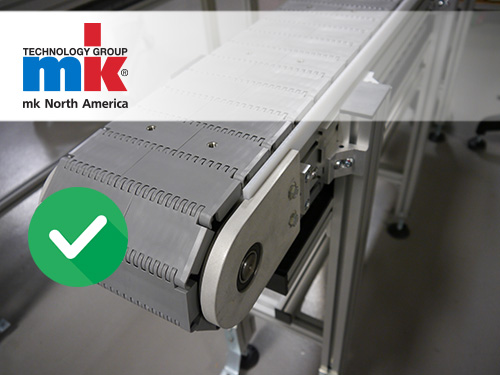How to Choose the Right Conveyor Belt for Your Application
Posted on

“Use the right tool for the job.” This seems like pretty easy advice to follow, and quite often it is. If you need to drive a nail, you use a hammer. If you need to dig a hole, you use a shovel. But what about when you need something a little more complicated than a hammer or a shovel, like a belt conveyor system? How can you be sure you’re using the right one for your specific application?
There’s a lot that goes into selecting the right conveyor for the job, but one of the most significant considerations is what kind of belting should be used. There are numerous belting options available for any conveyor system, and each has particular applications to which it’s best suited.
When choosing between different conveyor belt options, it’s necessary to keep a few key points in mind in order to determine exactly which one is the right tool for the job at hand.
Product or Material Being Conveyed
Determining what products or materials are being conveyed on the belt is a critical step in establishing the best belting option for a particular application. Relevant details include the size and weight of the materials being conveyed, product temperature, whether food or pharmaceuticals will be conveyed, and whether aggressive products such as those with very sharp edges are to be conveyed.
While a flat belt might be suitable for many applications involving simple conveyance of packaged materials, large or heavy objects might require a more sturdy option such as modular plastic belting.
Products like food and pharmaceuticals will require equipment to undergo rigorous washdown, and conveyor belting will need to be able to withstand regular exposure to harsh chemicals. Other specialty objects could also require a variety of custom-designed belting solutions.
Application and Conveyor Function
A conveyor that’s only used for getting products from point A to point B will have very different belting requirements than one used for indexing, positioning, accumulation, or other specialty applications. The level of incline and/or decline will also help to determine the best belting option.
Cleated belts, timing belts, flat-top chains, and other custom solutions are all options for applications where a basic flat belt isn’t up to the task.
Specialty Operating Environments
Conveyors that will operate indoors and at room temperature will have much more flexibility when it comes to available belt options. Extreme temperatures, exposure to the elements, cleanroom requirements, and other specialty operating environments will require specific belting, such as stainless steel wire mesh belting for high heat environments.
Other Considerations
While these are perhaps the most obvious as signification factors to take into account when selecting a conveyor belt, they are far from the only ones. Speed, maximum operating tension, conveyor length, pulley diameter, and other factors will all come into play, and will likely have to be determined by the conveyor engineering team working on your system.
If you need an expert opinion about conveyor belt options or any other stage of the conveyor design process, mk North America is a leader in the field of conveyor technology, offering numerous standard conveyor solutions in addition to custom design services. Get in touch by calling (860) 769-5500 or by filling out the form below.
